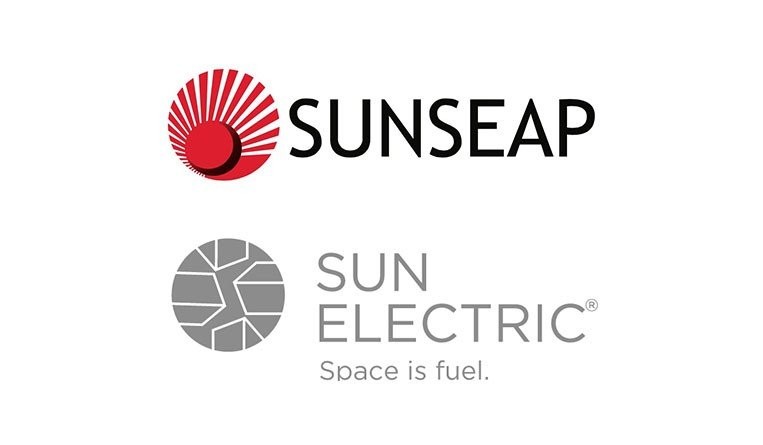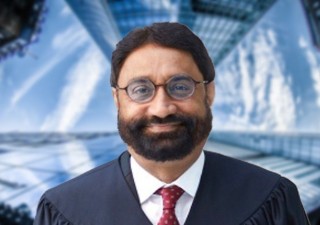Singapore: Sunseap Group Pte Ltd & 2 Ors v. Sun Electric Pte Ltd
29 March 2019

In Sunseap Group Pte Ltd v. Sun Electric Pte Ltd [2019] SGCA 4 (Sunseap v. Sun Electric), the Court of Appeal, on January 10, 2019, in overturning the decision of the High Court, held that the High Court has original jurisdiction to hear patent revocation proceedings where such proceedings were brought by way of a counterclaim in a patent infringement action. The Court of Appeal also clarified the question of when it would be appropriate for a defendant in patent infringement proceedings to seek the revocation of the entire patent relied upon by the plaintiff.
The plaintiff in Sunseap v. Sun Electric, Sun Electric Pte Ltd, is a licensed solar energy retailer supplying consumers in Singapore. Sun Electric is the proprietor of a Singapore patent for a power grid system, as well as a method of determining power consumption.
Sun Electric brought proceedings against certain member companies of the Sunseap Group for alleged infringement of the patent. Sunseap’s business activities include the retail of electricity to Singapore consumers and the development and management of rooftop solar photovoltaic systems.
In its defense and counterclaim, Sunseap sought, amongst others, (i) a declaration that the patent is and has always been invalid and (ii) an order that the patent be revoked. In patent infringement proceedings, it is usual practice for a defendant who seeks to defend himself on the basis that the patent is invalid (for instance, that the relevant invention does not satisfy the requirements of novelty, inventiveness or is not capable of industrial application) to seek a finding of invalidity, and consequently a revocation order, from the court by way of counterclaim in those proceedings.
Sun Electric’s Striking Out Application in the High Court
In response to Sunseap’s counterclaim, Sun Electric brought a striking out application to remove the portions of Sunseap’s defense and counterclaim which put the validity of the patent in issue by way of the counterclaim for revocation. Sun Electric’s application was dismissed at first instance by the Assistant Registrar in chambers. Sun Electric appealed against the Assistant Registrar’s decision.
On appeal, the High Court overturned the decision of the Assistant Registrar and struck out Sunseap’s counterclaim for revocation on the basis that it did not possess original jurisdiction to revoke a patent by way of a counterclaim.
The salient points in the High Court’s reasoning may be summarized as follows:
(1) An order for patent revocation “involves the determination of a status of a res or thing, for the very purpose of removing it from the register and depriving the patentee of the rights in rem bestowed on him as against the world.” As such, the court requires jurisdiction in rem before it can make any such order (Sun Electric Pte Ltd v. Sunseap Group Pte Ltd [2017] SGHC 232 (Sun Electric v. Sunseap (HC)) at [158]);
(2) There is no express statutory provision that confers the court original jurisdiction to hear revocation proceedings. Section 80(1) of the Patents Act (Cap. 221) merely provided that the Registrar of Patents may revoke a patent but was silent on whether the High Court had jurisdiction to do so; and
(3) Although Sunseap had cited 13 cases in the High Court and the Court of Appeal involving counterclaims for revocation, those cases did not explicitly address the question of whether the High Court could hear revocation applications in the first instance and were therefore not instructive.
The Decision of the Court of Appeal
The matter was brought before the Court of Appeal on appeal by Sunseap against the decision of the High Court. The Court of Appeal reversed the decision of the High Court and held, inter alia, that the High Court was seised of original jurisdiction to hear revocation applications brought by way of counterclaim in patent infringement proceedings.
Two Categories of Revocation Proceedings Before the High Court
The Court of Appeal distinguished the two categories of cases in which revocation applications may be heard in the High Court at first instance (Sunseap v. Sun Electric at [58]). The first category concerns revocation applications brought by way of counterclaim in patent infringement proceedings where “it is the defendant who is challenging the invalidity of a patent from its position of being a ‘defender’ and seeking an order from the High Court that the patent be revoked should it be found to be invalid.”
The second category concerns revocation applications which are independent of patent infringement proceedings where “the applicant is the ‘attacker’ who is challenging the validity of the patent and asking the High Court to revoke the patent on that ground.”
While the validity of a patent may be challenged before the High Court at first instance in the first category of cases (i.e. by way of defence), the High Court does not have original jurisdiction to hear proceedings in the second category. In particular, only the first category, not the second category, is included in Section 82(1) of the Patents Act, which provides a “closed and exhaustive list of the types of proceedings in which the validity of a patent may be put in issue” (Sunseap v. Sun Electric at [74]). Rather, original jurisdiction to hear revocation applications in the second category is vested exclusively in the Registrar.
The Jurisdictional Basis for the First Category of Revocation Applications
For the first category, the High Court has jurisdiction to determine the validity of a patent under Section 67(1) read with s 82(1)(a) of the Patents Act, which reads:
“67. – (1) Subject to this Part, civil proceedings may be brought in the court by the proprietor of a patent in respect of any act alleged to infringe the patent and (without prejudice to any other jurisdiction of the court) in those proceedings a claim may be made…
82-(1) Subject to this section, the validity of a patent may be put in issue –
(a) by way of defense, in proceedings for infringement of the patent under section 67 or proceedings under section 76 for infringement of rights conferred by the publication of an application;”
In this regard, the Court of Appeal disagreed with the High Court’s decision that in rem jurisdiction (as opposed to the court’s in personam jurisdiction) is required to grant an order revoking a patent: Sunseap v. Sun Electric at [95]
“An in rem judgment does not arise only from the court’s exercise of its in rem jurisdiction. It may arise equally in an in personam action. … [T]he essence of an in rem judgment is that it constitutes an adjudication on the existence of rights over property, or its status. Thus a decree of divorce or nullity of marriage – which is a decree declaring the status of persons – must also be classed as operating in rem. … This provides a clear example that in rem judgments may arise other than through the court’s exercise of its in rem jurisdiction, which is in any event generally viewed as being limited to its admiralty jurisdiction.”
The Court of Appeal also opined that the High Court, in possessing jurisdiction to hear revocation cases in the first category, is in line with the Parliament’s intention of saving costs in patent litigation as infringement proceedings would have already been before the High Court.
Should the High Court exercise its jurisdiction to determine the validity of a patent, Section 91(1) of the Patents Act governs how the High Court may give effect to such a ruling that a patent is invalid and provides that “the court may, for the purpose of determining any question in the exercise of its original or appellate jurisdiction under [the Patents Act], make any order or exercise any other power which the Registrar could have made or exercised”. Accordingly, the High Court may exercise any power of the Registrar, including the power to revoke a patent under Section 80(1) of the Patents Act.
When a Patent May be Revoked
An order to revoke a patent is only granted in appropriate cases. As a defendant in infringement may put in issue the validity of a patent ‘by way of defence,’ only the validity of claims alleged to be infringed may be put in issue under Section 82(1)(a) of the Patents Act. As such, not all of the claims in a patent may be found to be invalid in infringement proceedings before the High Court.
The Court of Appeal explained a revocation order will be made in the following scenarios:
(1) Where all of the claims in the patent are found to be invalid (i.e. where all claims in a patent is alleged to be infringed): the court should exercise its power to revoke the invalid patent;
(2) Where all the independent claims in a patent are found to be invalid: the court should exercise its power to revoke the patent as the dependent claims must necessarily be invalid as well; and
(3) Where only some of the claims in a patent are found to be invalid: it would not be appropriate for the court to revoke the entire patent as there would be some independent claims which validity had not been impugned. Nonetheless, the defendant remains entitled to a declaration of invalidity in respect of the invalid claims and may commence separate revocation proceedings before the Registrar.
Conclusion
The decision in Sunseap v. Sun Electric brings much-needed guidance for the accepted practice of bringing revocation applications by way of counterclaim in infringement proceedings, as espoused in a line of 13 precedent cases in the High Court and Court of Appeal.
However, the Court of Appeal appeared to be laying down a general rule in obiter that it would not be appropriate to revoke a patent where not all of its independent claims have been found to be invalid. This may have the unintended effect of leaving on the Register patents which claims (albeit not all) have been found to be invalid. While a defendant has the option of commencing revocation proceedings before the Registrar after a finding of invalidity, there is little impetus for the defendant to incur further legal costs to do so as the infringement proceedings against him would likely have concluded at that point in time. Furthermore, such a general rule may encourage plaintiffs in infringement proceedings to strategically exclude at least one claim in its patent in its case against the defendant in order to avoid the making of a revocation order against its patent.
Further guidance will be required on whether the court retains some discretion to make an order to revoke a patent notwithstanding that not all of its independent claims have been found to be invalid.








